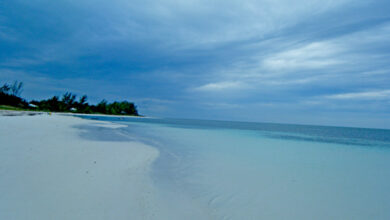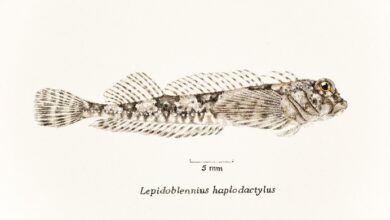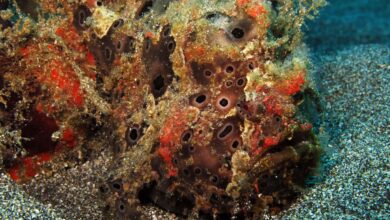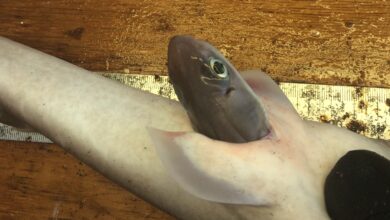Species on the switch | Fish Thinkers
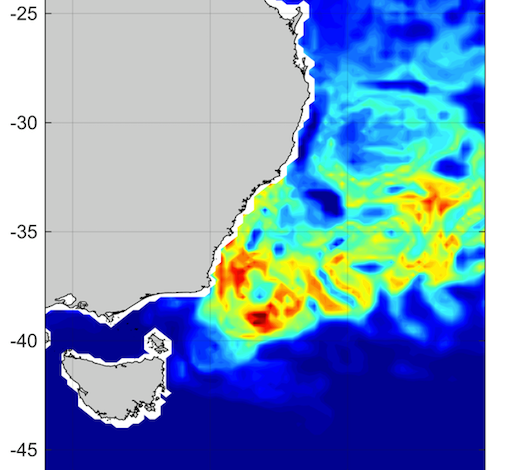

A prediction of the favored environmental habitat for the range-shifting yellowtail kingfish (Seriola lalandi) for March 2008, based totally on a mixture of preferences for sea ground temperature, current velocity and sea ground prime.
Curtis Champion is a PhD candidate on the Institute for Marine and Antarctic Analysis – Faculty of Tasmania. He stopped by the Fish Thinkers weblog to supply us a run down on just a few of the evaluation he is engaged on.
Species on the switch and a quick explainer about how range-shifts are usually acknowledged
Native climate. Change. Little doubt you’ve heard of the phenomenon. And whereas a small number of our political reps sporadically break into the headlines for criticising its actuality, the worldwide scientific neighborhood has been busy forging novel territory to know its ecological penalties. This emergent self-discipline is most-commonly referred to as “species redistribution science” because of crops and animals shifting the place they reside (normally within the path of the poles or up mountains) in response to modifications in temperature is possibly basically probably the most perceptible ecological affect of native climate change. An vital milestone for this house of analysis was simply recently acknowledge inside the scientific literature, when Bonebrake and co (2017) asserted that species redistribution science is now “a self-discipline in its private correct.” This sentiment was already well-established in February 2016 when 277 researchers gathered in Hobart to attend the inaugural Species on the Switch conference to debate the topic, and curiosity has solely grown, with planning presently underway for the next worldwide gathering (Species on the Switch 2.0) in South Africa, 2019.

Evaluations of fish being caught exterior their recognized differ are rising. However, these research are typically patchy and are most steadily liable to be from areas the place fishing effort is extreme fairly than advisor of the place the species is perhaps found.
The overarching aim of the sector is to know the ecological outcomes of human-caused native climate change to spice up {our capability} to predict and adapt to future change (certain, we’re in the intervening time devoted to future native climate change, even when now we have been to stop polluting now). It’s a fairly rattling vital house of study too, having already educated society that updated native climate change is driving a speedy, world redistribution of biodiversity (Pecl et al., 2017), and that these modifications are occurring quickest inside the ocean (Poloczanska et al., 2013). Implications of these findings embody detrimental outcomes to human properly being and well-being, notably inside the poorest areas of the world, and a redistribution of priceless and delicious pure belongings, like espresso, chocolate and wine crops (scary stuff!).
Nonetheless when it comes to the nitty-gritty of attempting to measure climate-driven modifications in species distributions over time, there’s normally devil inside the ingredient (or the reality is lack of ingredient). Detecting modifications inside the species distributions, and attributing these modifications to human-caused native climate change, is hard because of respectable historic datasets of species prevalence locations are elusive. As an illustration, observations of animals usually come from locations which may be easy for people to entry, and may probably not characterize the true distribution of a species, which means the data are usually confounded by observer bias. Throughout the absence of high-quality information sources, we’re capable of in its place flip to a special methodology for conserving tabs on the how species distributions are attainable being effected by native climate change. As species redistribution science progresses, it’ll attainable develop to be increasingly vital for people to have some understanding of, or have been uncovered to, the most common of approaches for determining species on the switch… so proper right here’s a quick explainer.

Curtis Champion with a sample of juvenile yellowtail kingfish. PhD scholar on the Institute for Marine and Antarctic Analysis (IMAS) and CSIRO Oceans and Ambiance.
The strategy does not include straight assessing modifications in locations the place crops and animals have been seen over time, nonetheless in its place relies upon of assessing shifts in species’ most popular environmental conditions – e.g. the differ of temperatures an animal is best suited to. By specializing in species environmental habitat preferences, we rely a lot much less on top of the range, long-term datasets of species observations and should begin to deduce attainable range-shifts based totally on modifications inside the environmental conditions that species reply to. It’s a sensible methodology that adopts the “let’s do the proper with what we’ve obtained” mentality. This method is normally referred to as ‘species distribution modelling’, which is misleading because of we’re actually modelling species’ environmental habitat preferences and by no means their distributions straight, so I need the selection time interval of ‘habitat suitability modelling.’
The looks of satellite tv for pc television for laptop know-how for remotely sensing environmental information (similar to sea ground temperature, current velocity, salinity and dissolved oxygen) has been instrumental in {our capability} to fully understand the suite of environmental elements that blend to variety the overall environmental habitat want of varied marine species. That’s achieved by matching the recognized location and time of, for example, fishes caught by leisure anglers with a variety of variables that attainable make clear why that species occurred in that location, similar to temperature. On this methodology, it’s attainable to stipulate the combination of a variety of environmental variables that best describe the place a species has been seen, and thus estimate the prospect of a species occurring in other places, given some particulars concerning the environmental conditions of those locations (as soon as extra, merely obtainable from satellites). It is these predictions of the habitat suitability, notably after they’re made generally and over a protracted timeframe (e.g. each month for 20 years), which may be usually mapped and used to infer climate-driven modifications to species distributions.
As species redistribution science turns into increasingly vital on a planet whose native climate is rapidly altering, it’s fascinating to ponder how reported modifications in species distributions are actually measured. Whereas direct approaches for measuring range-shifts are usually preferable when long-term datasets enable, I really feel it’s essential to ponder the sturdy hyperlinks and swap of information between habitat suitability modelling and native climate change ecology. This stage was highlighted by Bonebrake and others (2017), within the similar paper that launched species redistribution science and a self-discipline in its private correct, by exhibiting that ‘species distribution modelling’ (or habitat suitability modelling) is the best trending part inside this emergent self-discipline, suggesting this system is one worth understanding about.
You presumably can attempt further of Curtis’s evaluation in video variety, on evaluation gate otherwise you presumably can observe him on social media at 71 % Water.


